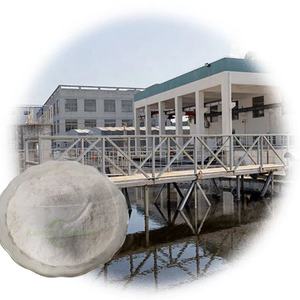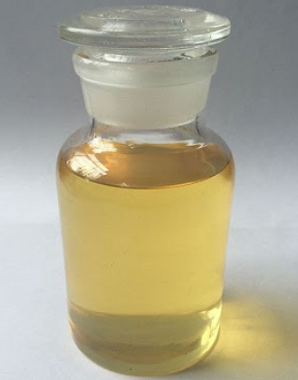Overview of Polyol/Pop/Polymer Polyol/Pop 10%/13%/15%/25%/45% for PU Foam
Polymer surfactants, also known as polymeric surfactants or amphiphilic polymers, are high-molecular-weight compounds that combine the properties of traditional low-molecular-weight surfactants with the unique features of polymers. Unlike small molecule surfactants, polymer surfactants offer enhanced stability, improved solubility, and the ability to form more complex structures such as micelles, hydrogels, and vesicles. These macromolecules find applications across a wide range of industries due to their tailored structures and tunable properties, which allow for precise control over interfacial behavior and solution rheology.
Features of Polyol/Pop/Polymer Polyol/Pop 10%/13%/15%/25%/45% for PU Foam
-
Molecular Weight and Structure: With a much higher molecular weight, polymer surfactants offer enhanced stability in harsh conditions and over prolonged periods compared to small molecule surfactants.
-
Tunability: The structure of polymer surfactants can be precisely engineered to include different functional groups, monomer sequences, and architectures, allowing for specific interactions and properties.
-
Multifunctionality: Apart from surface activity, they can also provide additional functionalities like thickening, rheology modification, and controlled release capabilities.
-
Self-Assembly: Capable of forming sophisticated self-assembled structures like micelles, hydrogels, and vesicles, which can encapsulate or release active ingredients in a controlled manner.
-
Environmental Compatibility: Many polymer surfactants are designed to be biodegradable and less toxic, making them suitable for eco-friendly applications.
-
Temperature and pH Responsiveness: Some polymer surfactants exhibit responsive behavior to changes in temperature or pH, enabling stimuli-responsive systems.

(Polyol/Pop/Polymer Polyol/Pop 10%/13%/15%/25%/45% for PU Foam)
Specification of Polyol/Pop/Polymer Polyol/Pop 10%/13%/15%/25%/45% for PU Foam
Polyol/POP/Polymer Polyol is a key product for making PU foam. It comes in different concentrations like 10%, 13%, 15%, 25%, and 45%. These versions meet details needs in foam manufacturing. The product is a mix of polyols and polymer-modified bits. This mix improves foam efficiency. The product works for flexible and inflexible foam applications. It makes sure high durability and comfort in finished products.
The hydroxyl worth varies in between 28-56 mg KOH/g. This influences just how the foam cures. Viscosity differs from 1500 to 4500 mPa · s at 25 ° C. Lower viscosity qualities flow much easier during handling. Greater viscosity kinds include stability. The pH stays neutral (6.5-7.5) to prevent reactions with various other chemicals. Dampness content is maintained below 0.1% to prevent foam flaws.
POP (Polymer Polyol) improves foam toughness. Higher POP percents (like 45%) increase load-bearing ability. Reduced focus (10%-15%) concentrate on gentleness and adaptability. The bits in POP enhance cell structure harmony. This minimizes contraction and enhances durability.
The item is compatible with common blowing representatives and stimulants. It operates in slabstock, molded foam, and spray foam arrangements. Changing the ratio modifications foam density. As an example, 25% POP produces medium-density foam for car seats. 45% POP matches sturdy furnishings or insulation panels.
Storage calls for completely dry problems listed below 30 ° C. Exposure to dampness deteriorates top quality. Use sealed containers to avoid contamination. Life span is 6-12 months if saved effectively.
Security guidelines include putting on gloves and goggles throughout handling. Make certain ventilation to avoid breathing in vapors. Adhere to local disposal regulations for extra material.
Quality checks include screening thickness, hydroxyl value, and particle diffusion. Set qualifications make sure uniformity. Custom-made formulas are readily available for distinct demands.
Applications include mattresses, upholstery, automobile interiors, and thermal insulation. The item meets market standards for fire resistance and environmental safety and security. It sustains environment-friendly production by minimizing waste.
Producers choose focus based upon end-use demands. Greater POP degrees cost more but boost performance. Reduced qualities save expenses for much less demanding uses. The material adapts to automated or manual assembly line.
Technical support aids optimize formulas. Troubleshooting overviews deal with common processing issues. Normal updates keep users informed regarding new grades or enhancements.

(Polyol/Pop/Polymer Polyol/Pop 10%/13%/15%/25%/45% for PU Foam)
Applications of Polyol/Pop/Polymer Polyol/Pop 10%/13%/15%/25%/45% for PU Foam
Polyol and Polymer Polyol (POP) are key materials in producing polyurethane (PU) foam. PU foam is commonly used across markets. Different POP percentages adjust foam homes like softness, stamina, and resilience. POP 10% develops soft, adaptable foam. It is excellent for mattresses and cushions. This percent makes sure even weight distribution. It fits bed linen items requiring convenience. POP 13% uses a balance of soft qualities and support. It prevails in sofa layers and child seat cushions. The foam adapts to physique. It supplies comfort throughout long use. POP 15% supplies firmer support. It works in workplace chairs and mattress cores. The foam preserves form under pressure. It avoids sagging gradually. POP 25% improves sturdiness. It is utilized in hefty furniture and industrial extra padding. This foam takes care of high weight and repeated usage. It withstands wear sought after environments. POP 45% creates rigid foam. It is best for insulation panels and auto components. The foam has high load-bearing capacity. It protects buildings by minimizing heat transfer. In automobiles, it dampens sound and resonance.
PU foam adapts to details needs. Reduced POP percentages develop open-cell frameworks. These allow airflow and softness. Higher POP percents form closed-cell frameworks. These improve stamina and insulation. Makers pick percents based upon item goals. Furniture makers use softer foam for comfort. Building relies on stiff foam for energy effectiveness. Automotive sectors pick foam that incorporates assistance and sound decrease.
Readjusting POP levels personalizes foam efficiency. This versatility satisfies industry requirements. PU foam stays cost-efficient. It lasts longer than several choices. Its versatility makes it a top selection for mattresses, insulation, automobile interiors, and commercial components. The ideal POP portion ensures items perform well in their certain functions.
Company Profile
SurfactantChina is a trusted global chemical material supplier & manufacturer with over 12-year-experience in providing super high-quality surfactant and relative products.
The company has a professional technical department and Quality Supervision Department, a well-equipped laboratory, and equipped with advanced testing equipment and after-sales customer service center.
If you are looking for high-quality surfactant and relative products, please feel free to contact us or click on the needed products to send an inquiry.
Payment Methods
L/C, T/T, Western Union, Paypal, Credit Card etc.
Shipment
It could be shipped by sea, by air, or by reveal ASAP as soon as repayment receipt.
5 FAQs of Polyol/Pop/Polymer Polyol/Pop 10%/13%/15%/25%/45% for PU Foam
Polyol/POP/polymer polyol is used in making PU foam. These materials decide foam softness, strength, flexibility. Different percentages (10%, 13%, 15%, 25%, 45%) change foam properties. Higher polymer polyol content makes foam firmer, more durable. Lower percentages create softer foam for items like cushions or mattresses.
What applications suit 10% polymer polyol PU foam?
10% polymer polyol foam is soft, lightweight. It works for low-density products. Examples include pillow inserts, packaging foam, seat padding. This foam compresses easily. It is not ideal for heavy use.
Why pick 15% over 10% polymer polyol?
15% adds more strength. The foam lasts longer under pressure. It fits furniture cushions, mattress toppers. The balance of comfort and durability improves. Costs stay low compared to higher grades.
When is 45% polymer polyol needed?
45% is for high-load uses. Car seats, industrial padding, heavy machinery need this. The foam resists sagging, holds shape under weight. It feels firmer, less pliable than low-percentage options.
Does storage affect polyol/POP quality?
Yes. Keep containers sealed. Moisture ruins chemical reactions. Store in dry, cool areas below 30°C. Direct sunlight degrades materials. Use within six months for best results.
Can polyol blends be customized?
Yes. Manufacturers adjust ratios for specific needs. Mixing 10% and 25% creates medium-firm foam. Custom blends meet unique density, fire resistance, or comfort goals. Testing ensures performance matches requirements.

(Polyol/Pop/Polymer Polyol/Pop 10%/13%/15%/25%/45% for PU Foam)





